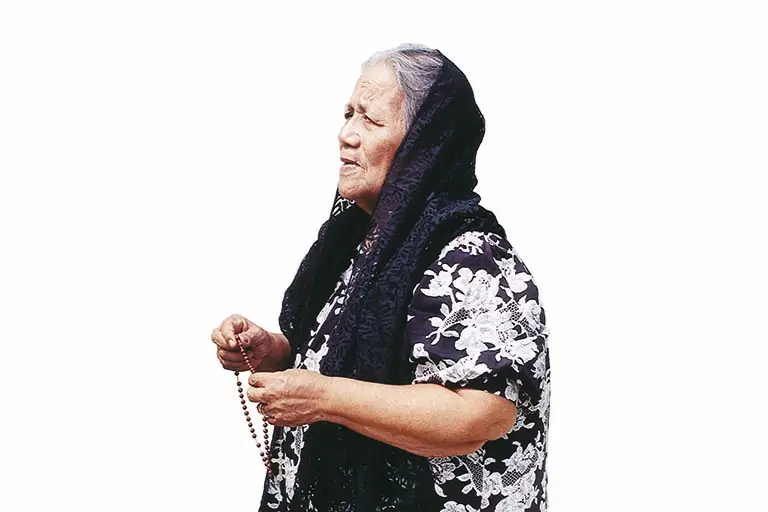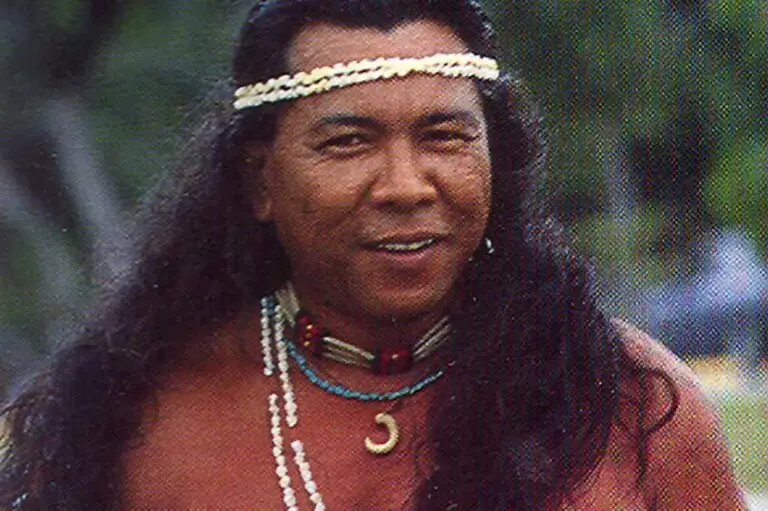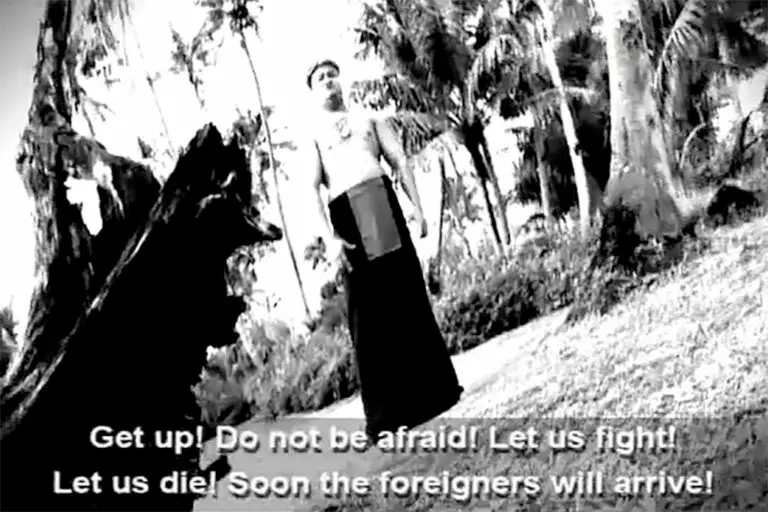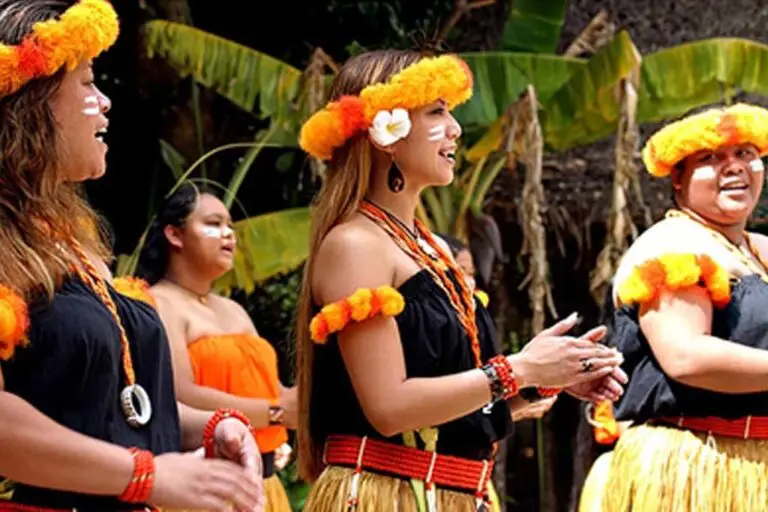Chant




Table of Contents
Share This
CHamoru/Chamorro chant dates back to ancient times
References to chanting practices of the Chamorro/CHamoru people can be found in early missionary documents. Fray Juan Pobre, writing about his stay in Rota in 1602, described the type of chants he observed during funerary rites. Women performed this ritual during an extended period of mourning around the deceased, prior to burial. They wailed and recited litanies about the qualities of the deceased, asking his spirit why he left his family, his fishing spear, his canoe, and so on.
Scholars such as Laura Marie Torres Souder in Daughters of the Island and Dr. Bernadita Camacho Dungca suggest that the tradition of chants was carried forward through women during the Spanish colonial period.
Christianized women became prayer leaders (techas) in their Spanish Catholic rituals. They led nobenas (novenas; nine-day rosaries dedicated to particular saints) and rosaries for the dead by reciting these prayers in a particularly nasal, high-pitched singing monotone, which was joined in response by the congregation.
The monotonal sound of nobenas, heard during religious services today, is greatly influenced by the ancient chanting of the Chamorro people. The nasal sounds are from the Austronesian connection that Chamorros, as descendants of the Austronesian tribes, inherited. This particular sound is prevalent throughout the Pacific and Asia regions, and can be heard during the Festival of Pacific Arts held every four years.
Revival of CHamoru/Chamorro chant
One of the first contemporary chanters, Jesse “Tåno’” Rivera, adopted this delivery style and added his own Chamorro nationalistic words to proclaim proudly, “Guahu Taotao Tåno’!” (I am a person of the land!) to begin each of his chant renditions. His chants reflected the rise of Chamorro nationalism in the early 1990s.
Rivera was called upon to be Guam’s official chanter for opening ceremonies along with the usual prayer by a religious clergy. He traveled with many of the Guam cultural delegations of the 1990s, delivering his signature, long drawn-out, “Guahu Taotao Tåno’” opening, followed by references to the proud heritage of the Chamorro people in hunting, fishing, canoe building and sailing, respect for elders and ancestors, and other phrases.
The revival of chant was passed on through Chamorro dance groups who began to flourish in the 1990s. Several powerful chanters became popular during that decade, usually associated with their community or school dance group. Leonard Iriarte spearheaded the development of a chant group in the late nineties, called “Guma’ Pålu Li’e” (House of the Seeing Mast). They changed their name to more closely reflect their activities in 2006, to ”I Fanlalai’an” (The Place for Chant). The term is derived from the indigenous Chamorro root word ”lålai,” meaning “to sing or chant,” and the affixes ”fan” and “an,” meaning “place where.”
This group approached re-creation of chant from a more regional, Micronesian reflection of lifestyles and body language. Iriarte composed chants that he taught to the group, based on pre-Spanish vocabulary and Austronesian language structure (on which the Chamorro language is still framed). Chanters advance in status as they learn to compose their own chants.
Their group chants are usually structured with a lead chanter who calls the tone and cadence with a beginning phrase. The group joins in with a repetition of the leader’s phrase or a group response. The rhythm is Micronesian in style, with body slapping, stomping, and repeated vocal sounds to create the cadence.
Chants refer to legendary people and traditional lifestyles. The choice of subject is varied, according to the theme selected by the composer. The overriding rule is to render the chant in pre-colonial Chamorro words.
Several dance groups have incorporated the style and compositions created by Iriarte, as revealed in both the Festival of Pacific Arts presentations in Palau in 2004 and the 2008 delegation to American Samoa. Most chanters have adopted the dress used by Chamorro dance groups, or the pan-Pacific, three-to-six yard length of material wrapped around the body.
I Fanlalai’an selected colors that are traditional and valued in Micronesia. Orange symbolizes the Spondylus shell that was valued for high status and wealth. The colors red, white, and black were obtained from their environment and used to color canoes. Head garlands of these colors in shells, flowers and feathers top off an orange or yellow body wrap that starts at the waist to ankle for men and above the breasts to ankle for women. A prominent belt of shells or other natural construction provides contrast. Like other dancers and chanters, pendants, necklaces, armbands and ankle bands of natural materials complete the dress.
Starting about 2005, Jay Pascua developed presentations of re-created Chamorro chants, based on his observations of the nasal quality and high-pitched monotones he heard recited by elder women prayer leaders. He believes that ancient chants revealed themselves through these intonations.
Pascua begins his presentations dressed in a black, ankle-length wrap, tied at the waist, and carries a rolled-up woven mat (guafak) which he rolls open and lays down to create a sacred space. He explains the significance of each of the items he used, such as the blowing of the conch (kulu) to call people together, the sprinkling of powdered quicklime, called afok, (used as an ingredient in betelnut chewing) around the edge of the mat.
Pascua’s presentations include the story of his search for the Chamorro chant sound that led him to the intonations of the old techas. He carries a large book, bound with a pandanus-woven cover, which he opens to recite various chants he had composed. His presentations are a popular form of heritage education at schools and cultural events.
Chamorro chant has become an accepted contemporary tradition that has become a part of official cultural welcoming rituals and other cultural sharing events.
For further reading
Driver, Marjorie G. The Account of Fray Juan Pobre’s Residence in the Marianas, 1602. MARC Miscellaneous Series No. 8. Mangilao: Micronesian Area Research Center, University of Guam, 1993.
Flores, Judy. “Art and Identity in the Mariana Islands: Issues of Reconstructing an Ancient Past.” PhD thesis, University of East Anglia, 1999.
Souder-Jaffery, Laura Marie Torres. Daughters of the Island: Contemporary Chamorro Women Organizers on Guam. 2nd edition. MARC Monograph Series No. 1. Mangilao: Micronesian Area Research Center, University of Guam, 1992.
